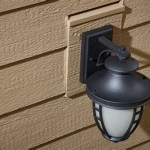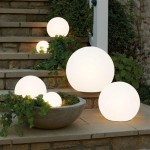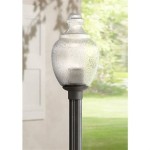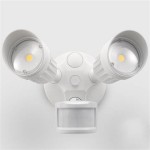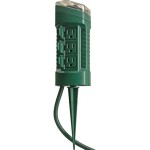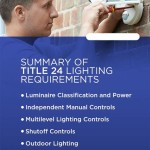Business Outdoor Lighted Box Signs: A Comprehensive Guide
Business outdoor lighted box signs serve as fundamental tools for attracting attention and establishing a strong brand presence. These signs, often illuminated with LED technology, are prevalent in various industries, offering a versatile and cost-effective method for advertising goods, services, and brand identity. This article explores the components, benefits, design considerations, installation processes, and regulatory aspects associated with business outdoor lighted box signs.
Components of a Lighted Box Sign
A typical lighted box sign comprises several key components working in tandem to achieve its intended function: the cabinet, the face, the illumination source, and the mounting hardware.
The cabinet, typically constructed from aluminum or steel, provides the structural integrity of the sign. Aluminum offers corrosion resistance and is lightweight, simplifying installation and maintenance. Steel, on the other hand, provides greater strength and durability, particularly in larger sign formats or regions susceptible to harsh weather conditions. The cabinet's depth varies depending on the illumination method and design requirements, ranging from a few inches for slimline LED signs to a foot or more for signs utilizing fluorescent lamps.
The face of the sign, the visible surface displaying the message, is typically made from acrylic or polycarbonate. Acrylic offers excellent clarity and is easily customizable through various printing and vinyl application techniques. Polycarbonate, known for its impact resistance, is a suitable choice for environments prone to vandalism or accidental damage. The face material can be clear, translucent, or opaque, depending on the desired lighting effect. Translucent faces allow light to pass through, illuminating the graphics, while opaque faces block light, creating a contrasting effect.
The illumination source, historically fluorescent lamps, has largely been superseded by LED technology. LEDs offer superior energy efficiency, longer lifespan, and improved light quality compared to fluorescent lamps. LED modules can be arranged in various configurations within the cabinet to achieve uniform illumination across the sign face. Different LED colors are available to create specific visual effects and match brand guidelines. Furthermore, LEDs exhibit improved cold weather performance, making them suitable for regions with low temperatures.
The mounting hardware secures the sign to the building or ground. Options include wall mounts, pole mounts, and free-standing structures. The choice of mounting hardware depends on the sign's size, weight, and location. Proper mounting is crucial for ensuring the sign's stability and safety, particularly in areas susceptible to strong winds or seismic activity. All mounting hardware should comply with local building codes and regulations.
Benefits of Utilizing Lighted Box Signs
Lighted box signs offer a range of advantages for businesses seeking to enhance their visibility and brand awareness. These include enhanced visibility, cost-effectiveness, versatility in design, and long-term durability.
Enhanced visibility is paramount for attracting customers. Lighted box signs remain visible day and night, ensuring that a business's message is consistently presented to potential customers. The illumination draws attention, particularly in low-light conditions or during nighttime hours. This is especially beneficial for businesses operating during evening hours or located in areas with high traffic volume. The consistent visibility increases brand recognition and reinforces the business's presence in the community.
Cost-effectiveness, both in the initial investment and ongoing operational costs, makes lighted box signs an attractive option for many businesses. While the initial cost may vary depending on the size, materials, and complexity of the sign, the long-term benefits outweigh the initial investment. The low energy consumption of LED-illuminated signs translates into significant savings on electricity bills over time. Furthermore, the long lifespan of LEDs reduces the frequency of replacements and maintenance, further minimizing operational costs. Compared to other forms of advertising, such as print or broadcast media, lighted box signs offer a sustained and cost-effective method for promoting a business.
Versatility in design is another key advantage. Lighted box signs can be customized to reflect a brand's unique identity and messaging. Various font styles, colors, and graphics can be incorporated into the design to create a visually appealing and memorable sign. The face of the sign can be easily updated or replaced, allowing businesses to adapt their messaging to promote new products, services, or special offers. This flexibility ensures that the sign remains relevant and effective over time. Custom shapes and sizes are also possible, allowing businesses to create unique and eye-catching signs that stand out from the competition.
Long-term durability ensures a lasting return on investment. Constructed from durable materials and designed to withstand the elements, lighted box signs offer a long service life. Aluminum or steel cabinets provide protection against corrosion and physical damage. Acrylic or polycarbonate faces resist fading and cracking. LED illumination sources are highly durable and energy efficient. By choosing high-quality materials and proper installation techniques, businesses can ensure that their lighted box sign remains in excellent condition for many years, providing a continuous and effective advertising platform.
Design Considerations for Effective Lighted Box Signs
Effective design is critical for maximizing the impact of a lighted box sign. Key considerations include legibility, color selection, font choice, and overall visual appeal.
Legibility is paramount. The sign's message must be easily readable from a distance, allowing potential customers to quickly understand the business's name and offerings. Clear and concise wording is essential. Avoid using overly complex or cluttered graphics that may distract from the core message. The size of the text should be proportional to the viewing distance, ensuring that it remains legible from a moving vehicle or across a busy street. Consistent spacing between letters and words enhances readability. A well-designed sign prioritizes clarity and ease of comprehension.
Color selection plays a crucial role in attracting attention and conveying brand identity. Colors evoke different emotions and associations, so choosing colors that align with the brand's personality is important. Contrast between the text and background is essential for legibility. Bright colors, such as red or yellow, can be used to draw attention, but they should be used sparingly to avoid overwhelming the viewer. Neutral colors, such as white or gray, can create a more sophisticated and understated look. Consider the surrounding environment when choosing colors to ensure that the sign stands out without clashing with its surroundings. Consistency in color usage across all branding materials reinforces brand recognition.
Font choice significantly impacts the sign's overall aesthetic and readability. Choose a font that is clear, easy to read, and consistent with the brand's identity. Avoid using overly decorative or script fonts that may be difficult to decipher from a distance. Sans-serif fonts, such as Arial or Helvetica, are generally more legible than serif fonts, such as Times New Roman or Garamond, especially for outdoor signage. The font size should be appropriate for the viewing distance, ensuring that the text remains legible even from far away. Use a limited number of fonts to maintain a clean and professional look. Consistency in font usage across all branding materials contributes to a cohesive brand identity.
Overall visual appeal is essential for capturing attention and creating a positive impression. The sign should be visually balanced and aesthetically pleasing. Avoid using overly cluttered or busy designs. Incorporate elements of visual interest, such as color accents or unique graphics, to make the sign stand out. The sign should be consistent with the brand's overall aesthetic and messaging. Consider the surrounding environment and design a sign that complements its surroundings. A well-designed sign creates a positive and memorable impression, attracting customers and enhancing brand perception.
Installation and Regulatory Aspects
Proper installation ensures that the sign is secure, safe, and compliant with local regulations. It’s crucial to engage qualified professionals with experience in sign installation.
Before installation, thoroughly research and understand local zoning regulations and permitting requirements. Many municipalities have specific guidelines regarding sign size, height, location, and illumination levels. Failure to comply with these regulations can result in fines or removal of the sign. Obtain all necessary permits before beginning the installation process. This typically involves submitting detailed plans and specifications to the local authorities. Work closely with the permitting office to ensure that the sign meets all applicable requirements. Keep copies of all permits and approvals on file.
Engage qualified professionals for the installation. Sign installation requires specialized skills and equipment. Hiring experienced installers ensures that the sign is properly mounted, wired, and tested. Select installers who are licensed and insured. Verify their credentials and experience before hiring them. Obtain multiple quotes from different installers to ensure that you are getting a competitive price. Review their references and previous work to assess their quality and reliability. A professional installation ensures that the sign is safe, secure, and visually appealing.
Regular maintenance is essential for ensuring the sign's longevity and performance. Inspect the sign regularly for any signs of damage or wear. Clean the sign face periodically to remove dirt, dust, and debris. Replace any burned-out bulbs or faulty wiring promptly. Consider implementing a preventative maintenance program to identify and address potential problems before they become major issues. Proper maintenance extends the sign's lifespan and ensures that it continues to effectively promote the business.
Electrical safety is a paramount concern. Ensure that all electrical wiring and connections are properly installed and grounded. Use weatherproof connectors and conduit to protect wiring from the elements. Hire a qualified electrician to inspect and test the electrical system. Comply with all applicable electrical codes and regulations. Regular electrical inspections help prevent potential hazards and ensure the safety of employees and customers.

Led Illuminated Business Sign Outdoor Lighted Box Double Choose Size 5x

Outdoor Lighted Signs For Business Led Traffic Control

4x4 Outdoor Lighted Box Sign Led Illuminated Front

Outdoor Light Box Sign Whole Illuminated Lightbox

Outdoor Light Boxes By Lightbox

Outdoor Light Boxes For Corporate Events Custom Box Signs Even Pk Green Usa

Outdoor Light Box Sign Whole Illuminated Lightbox

2 X 8 Custom Outdoor Lighted Box Sign Led

5 Things You Should Know About Custom Light Box Signs

Light Box Signs For Business Custom Outdoor Lightbox
Related Posts

